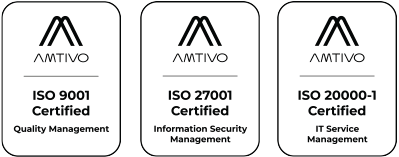Gap Assessments
Identify areas where improvements can be made in security and risk management.
The primary aim of a security gap assessment is to pinpoint vulnerabilities and potential threats while evaluating whether the organisation's security measures are sufficient to address them.
Key steps in this gap analysis service include:
-
Collecting data on your current information security posture.
-
Reviewing your cyber security strategy.
-
Identifying critical assets such as networks, systems, and data.
-
Assessing overall cyber and security risks.
-
Providing recommendations on security controls, processes, and procedures.
Why do you need a Security Gap Assessment?
-
Identify specific weaknesses in your current cyber security posture
-
Get guidance on addressing these gaps and bolstering your security defences
-
You have confidence in your existing cyber security measures and want to ensure their continued robustness.
-
Verify that your security policies and processes are effective and relevant in today's threat landscape.
-
Identify and mitigating new vulnerabilities or threats to your business.
-
Demonstrate your organisation's commitment to cyber security to your board, investors, partners, clients, and other stakeholders.
Gartner Recognised
We are thrilled to share that Integrity360 has been recognised as a Gartner Representative Vendor in 5 of their Market Guides, including: Managed Security Services, Managed Detection and Response, Gartner's Market Guide for Co-Managed Security Monitoring Services and Managed SIEM Services.
Gartner has included a range of providers within its market guide for managed services to ensure clear coverage from a geographical, vertical and capabilities perspective. Those included in the Gartner market guide display clarity in the vision for an end-user outcome-focused offering distinct from a pure technology-driven offering.

Speak to an expert
London: +44 20 3397 3414
Sofia: +359 2 491 0110
Cape Town: +27 08 606 25673
Johannesburg: +27 08 606 25673
Gap Assessments FAQs
What is a cyber security gap assessment?
A cyber security gap assessment identifies the differences between your organisation’s current security posture and your target state—typically defined by industry standards, regulatory requirements, or internal objectives. It helps prioritise improvements and reduce risk.
What does Integrity360’s gap assessment service include?
The service includes a thorough review of your people, processes, and technology against selected frameworks (e.g. ISO 27001, NIST CSF, NIS2, GDPR, DORA). Integrity360 provides a detailed report outlining gaps, associated risks, and a roadmap for remediation.
When should an organisation conduct a gap assessment?
Gap assessments are valuable before a certification project, audit, or regulatory deadline. They’re also ideal when undergoing digital transformation, onboarding new systems, or following a cyber incident.
What areas are assessed in the process?
Depending on the chosen scope, Integrity360 assesses governance, access control, network security, endpoint protection, cloud security, identity management, incident response, third-party risk, and regulatory alignment.
How is the assessment tailored to our business?
Integrity360 customises the assessment based on your sector, size, regulatory obligations, risk appetite, and existing controls—ensuring the findings and recommendations are practical and relevant.
Does the assessment support compliance and audit readiness?
Yes. Gap assessments map your current state to compliance standards (such as ISO 27001, NIS2, PCI DSS, or GDPR) and identify what’s needed to achieve alignment—supporting both internal governance and external audits.
Will we receive a prioritised remediation plan?
Absolutely. The final report includes clear, prioritised recommendations based on business risk, impact, and effort. This enables actionable planning and investment justification for stakeholders.
What makes Integrity360’s gap assessment service different?
Integrity360 combines hands-on technical expertise with regulatory insight. The assessments are delivered by experienced consultants who provide clear, business-aligned guidance—not just lists of findings.



